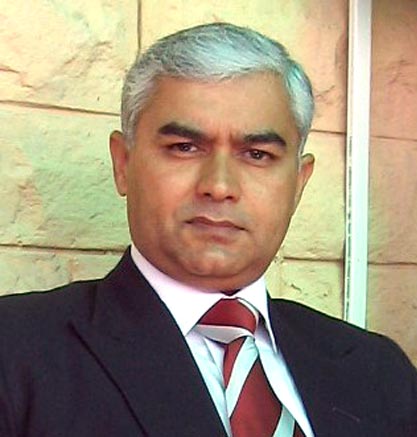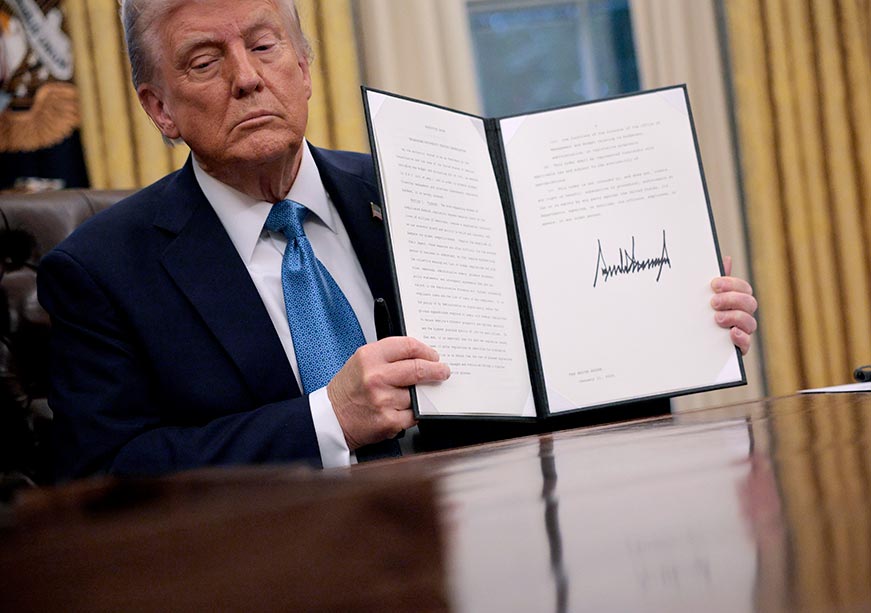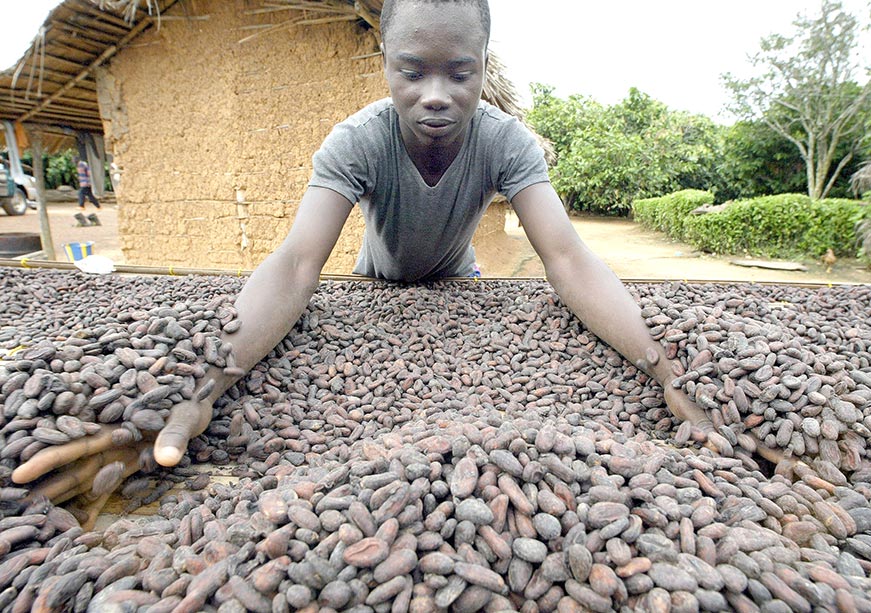
Image Source: Getty
In the post-Cold War era, Europe enjoyed a privileged trade status. However, under United States (US) President Donald Trump, America seeks to change this, arguing that it harms US economic interests. Under Trump’s ‘Make America Great Again’ (MAGA) campaign, he has imposed reciprocal tariffs on European states to offset their favourable trade balance with the US.
Another point of contention is the strategic divergence over European Security. This stems from the US’s belief that Europe is not spending its fair share of the Gross Domestic Product (GDP) on the North Atlantic Treaty Organization's (NATO) security guarantee.
Recent provocative developments have intensified tensions, including US Vice President JD Vance's controversial remarks at the Munich Security Conference and Elon Musk's support for far-right movements in Europe, notably AfD (Alternative for Germany) and Britain's Reform United Kingdom (UK), via his popular platform X.
The current tensions between Europe and the US are longstanding issues and represent an unprecedented confluence of problems that may lead to deeper divisions across the Atlantic, according to Antonio Missiroli, a former NATO assistant secretary-general for emerging security challenges.
The transatlantic partnership had faced fractures before, such as France’s withdrawal from NATO's military command in 1966 and trade tensions in the 1970s and the 1980s, but none were as sharp as the present one. Strains emerged during Trump’s previous term when he publicly sparred with French President Emmanuel Macron at the 2019 NATO Summit. The Biden administration's interregnum allowed the European Union (EU) partners to temporarily forget these strains. However, Trump's return as the US president and withdrawal of military support to Ukraine made these strains too ominous to miss. The current tensions between Europe and the US are longstanding issues and represent an unprecedented confluence of problems that may lead to deeper divisions across the Atlantic, according to Antonio Missiroli, a former NATO assistant secretary-general for emerging security challenges.
Strengthening the EU’s Security Capacity
Given the current geopolitical challenges, the EU has been attempting to strengthen its security and defence policies in line with the objectives of the Versailles Declaration and the 2022 Strategic Compass. The 2022 EU Strategic Compass serves as the blueprint to fortify the EU’s security and defence capabilities by 2030. The Strategic Compass outlines four major points of action: Act, Secure, Invest, and Partner (European Union External Action 2022). Under ‘Act’, the EU pledges to enhance crisis response capabilities by raising a Rapid Deployment Capacity (RDC) and improving its command-and-control structures. ‘Secure’ emphasises ‘pre-emptive threat assessment,’ bolstering intelligence capabilities, and fortifying cyber defence. ‘Invest’ focuses on investing in cutting-edge technologies to reduce dependencies on non-European sources and fill strategic gaps. Finally, ‘Partner’ requires the EU to enhance cooperation with its crucial partnersNATO and the UN. The US has asked European nations to ramp up defence expenditures and contribute more to Europe’s security. France has long been urging the EU to develop an autonomous defence and security policy for Europe, which earlier failed due to a lack of consensus. Although the consensus seems to be building up now, the lack of it on defence and security policy is the least of Europe’s concerns. What plagues it further is a lack of defence manufacturing capacity, as a result of its longstanding dependence on the US military for security and the US military industry for the supply of military hardware.
The US has asked European nations to ramp up defence expenditures and contribute more to Europe’s security.
The cumulative GDP of Europe is more than US$ 18.5 trillion, and the debt-to-GDP ratio is around 81.6 percent. Fundamentally, Europe does not have a financial issue to increase its defence expenditure to say even 3.5 percent of its GDP, to become more self-reliant for its defence and protect its sovereignty. However, the defence industry is already overwhelmed. For example, Dassault, a French aerospace company, has an order of 400 aircraft from various countries in Europe, the Middle East, and Southeast Asia, but lacks manufacturing capacity in France. Similarly, Rheinmetall AG, an automotive and arms company based out of Germany, can make only 60,000–70,000 artillery and other shells per year against the requirement of 1.1 million shells. KNDS Group Companies Nexter Systems S. A. and Krauss-Maffei Wegmann GmbH & Co. KG have order backlogs amounting to 15.7 billion euros by the end of 2024. Similar capacity constraints may also affect other European defence manufacturers.
Exploring India’s role
As European nations seek to expand and modernise their defence industry to meet emerging and future threats, India can play a crucial role in the EU’s defence industry supply chains. The EU and India are exploring the possibility of a defence and security pact, also called the Permanent Structured Cooperation (PESCO), akin to the EU’s agreements/pacts with Japan and South Korea. The PESCO framework should enable the EU member states to work jointly with India to develop and invest in shared defence capabilities and improve the operational readiness of the armed forces. While this will help India gain access to advanced technologies, European states would benefit from the robust and competitive manufacturing facilities of India, provided these manufacturers set up factories in India.
In 2014, India launched its ‘Make in India’ initiative to establish itself as a global manufacturing hub. Under this initiative, defence manufacturing is a critical objective. Many private players have entered the field of defence manufacturing in the last few years. Among these, Reliance Naval and Engineering, Tata Group, Bharat Forge, Adani Group and Mahindra are notable few. Over the past five to six years, Swedish Arms Manufacturer, Saab, has already set up a manufacturing unit in India, located in Jhajjar, Haryana, where they plan to produce the Carl-Gustaf M4 weapon. L&T MBDA Missile Systems Limited, a joint venture with Larsen & Toubro located in Coimbatore, has already commenced manufacturing various missiles.
Over the past five to six years, Swedish Arms Manufacturer, Saab, has already set up a manufacturing unit in India, located in Jhajjar, Haryana, where they plan to produce the Carl-Gustaf M4 weapon.
India can capitalise on the EU’s allocation of 500 billion euros to ramp up its ammunition stocks. Indian Ordnance Factories manufacturing ammunition shells have the idle capacity to cater for surge requirements during the war and have modernised manufacturing to make hi-tech ammunition, which can be used to equip EU militaries. Some EU members have already ordered ammunition from these Public Sector Undertakings (PSUs). Joint production with private ammunition manufacturers also remains a possibility, as some of these manufacturers already have collaborations with EU companies.
The Indian government is attempting to kickstart India as a leading shipbuilder with a multi-billion-dollar cash injection, in line with its Viksit Bharat 2047 vision. The government proposed plans to incorporate the PSU Shipyards to provide the much-needed functional and financial autonomy that is presently unavailable to them due to the bloated bureaucracy in the Ministry of Defence. In its most recent budget announced on 1 February 2025, the government allocated US$ 28 billion for a Maritime Development Fund (MDF) to support the country’s maritime sector. This would help India emerge as a globally competitive shipbuilding hub.
Dassault India is in the process of establishing a Maintenance, Repair, Overhaul (MRO) setup near Jewar International Airport in Greater Noida, which can be scaled to provide maintenance support to combat jets from EU states. It already has a joint facility with Reliance near Nagpur for manufacturing aircraft parts. Safran has a facility in Hyderabad for aero-engines. The Tata group, in collaboration with Airbus, has already begun manufacturing C295 military transport aircraft at its factory in Vadodara, Gujarat. These facilities can be scaled up to meet Rafale requirements for EU members.
The Tata group, in collaboration with Airbus, has already begun manufacturing C295 military transport aircraft at its factory in Vadodara, Gujarat.
India possesses a robust engineering talent pool, established defence production infrastructure, a large defence budget with a focus on research and development, and indigenisation, allowing it to produce complex military equipment domestically, and potentially export to other countries as well. Government policies can encourage domestic and foreign private players through Foreign Direct Investments (FDIs) and other incentives. From the foregoing, it can be summarised that India has built a fairly robust defence manufacturing ecosystem with surplus capacity to support exports. It is also capable of absorbing foreign technology for ‘Make in India’.
However, the question remains: can India grab this opportunity with both hands? With a proactive approach, India should look for opportunities to make for the EU, boosting its defence export, joint manufacture, and technology development collaboration. While there is a call within the EU to make everything within Europe, seeing the urgency, it may not be possible immediately. Thus, with proactive policies, actions, and deft diplomacy, India can emerge as a defence equipment exporter to re-arm Europe in the short term, and in the long term become a part of the manufacturing supply chains. For this, India may have to consider the need to create a lean, mean set-up in the Prime Minister’s Office (PMO), and one that functions in a military mission mode to transform this opportunity into an advantage.
Colonel Deepak Kumar is a retired Army veteran and an analyst of geopolitical affairs.
The views expressed above belong to the author(s). ORF research and analyses now available on Telegram! Click here to access our curated content — blogs, longforms and interviews.




 PREV
PREV


